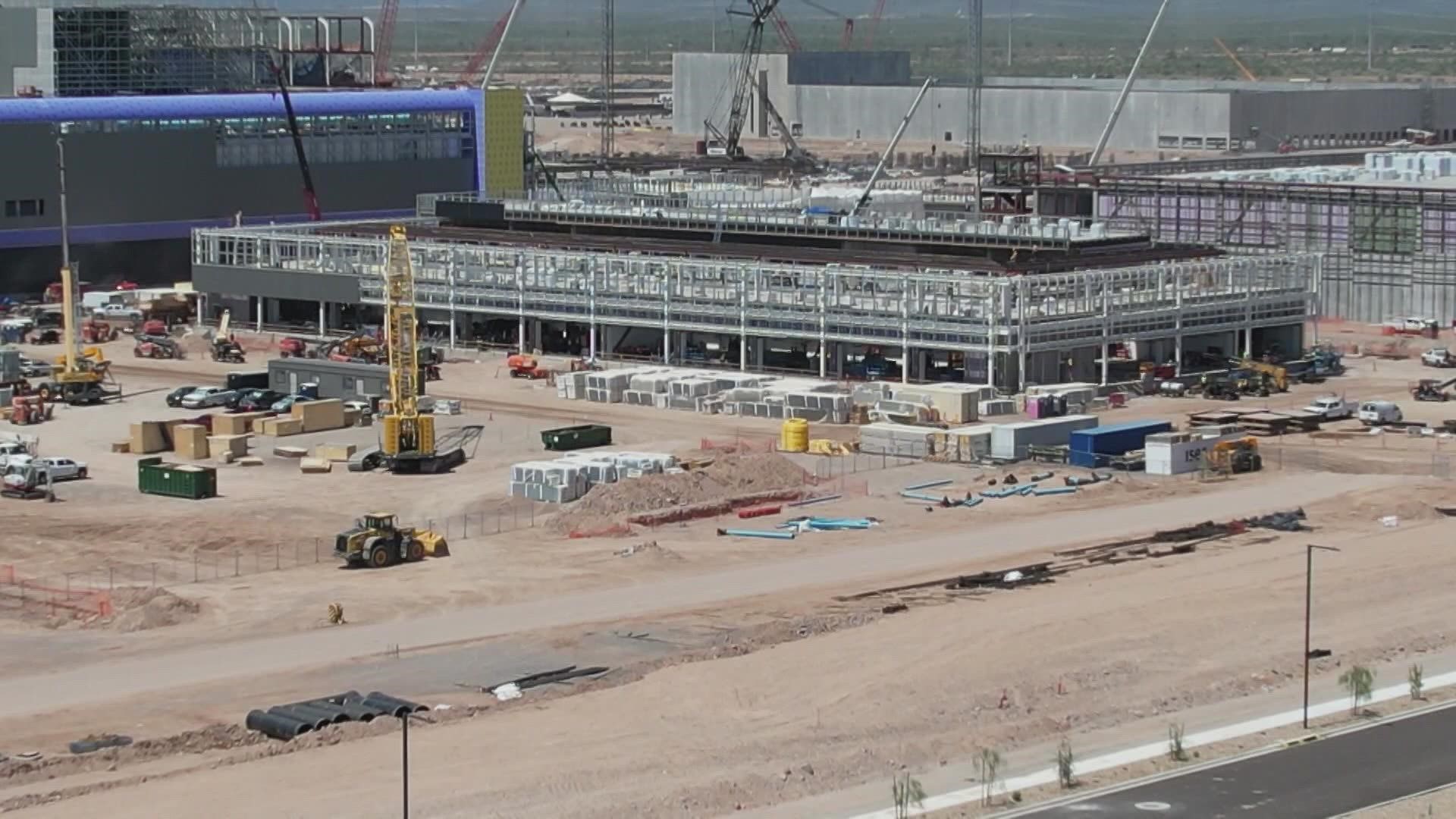PHOENIX — The news that the Taiwan Semiconductor Manufacturing Company (TSMC) started construction on a second chipmaking plant in Arizona, before construction on the first ended, caused mixed reactions among residents.
President Joe Biden, Sen. Mark Kelly and Gov. Doug Ducey all touted the jobs and revenue TSMC would bring to Arizona and the U.S. at large during an event on Tuesday.
However, numerous viewers emailed and messaged 12News asking how Arizona could afford to invite an industry that requires a hefty amount of water to run during an ongoing megadrought.
PREVIOUS COVERAGE: 'Largest foreign direct investment in Arizona history': TSMC announces construction of second chipmaking plant
We spoke with experts to verify how much water semiconductor plants use, and how they use it.
The question
Do semiconductor plants use a lot of water?
Our sources
- TSMC
- Intel
- ASU School of Sustainable Engineering
The answer
Yes, semiconductor plants do need a large supply of water to run. However, the vast majority of water that the plants are supplied isn't consumed. Rather, it is recycled and reused.
What we found
How much water do chipmaking plants need to run?
12News reached out to TSMC for an estimate on the daily and yearly amount of water they expect the two new plants to use. The company has not returned our request for comment at the time of publishing this article.
However, a 2019 TSMC water management report focused on three plants in Taiwan shed light on how much water each plant is supplied per day.
One acre-foot of water is what an average single-family household uses in a year, according to the Arizona Department of Water Resources. Based on conversions from metric tons to acre-feet, here's around how much water each plant is supplied per day:
- 1,204 acre-feet of water per day at the Central Taiwan Science Park
- 777 acre-feet of water per day at the Southern Taiwan Science Park
- 456 acre-feet of water per day at the Hsinchu Science Park
The supply needed for the Arizona plants may differ from these for a variety of factors, according to Paul Westerhoff, professor at ASU's School of Sustainable Engineering and the Built Environment.
"It's hard to give an exact estimate," Westerhoff said. "I have a number of friends and colleagues here in the Phoenix area and they're doing super innovative stuff in terms of water. Any number you would find online may already be obsolete."
While the amount of water the Taiwan plants are supplied daily is large, the sheer total supply doesn't tell the full story.
How much water do chipmaking plants consume?
Each plant only consumes a fraction of the water it is supplied with.
TSMC's Central Taiwan Science Park, for example, uses 3.3% of its daily allocation, or around 4.9 acre-feet of water per year. The Southern Taiwan Science Park and the Hsinchu Science Park use 5 acre-feet of water and 5.7 acre-feet of water daily, respectively.
The reason behind the minimal consumption is thanks to recycled water.
"A smart recycled water management mechanism can dynamically allocate and supply recycled water, instead of city water, to other production units," the 2019 TSMC report said.
TSMC isn't the only company with a high water return. Intel, which has a chipmaking plant in Chandler, said recycling water is a major focus for the company.
"In 2021, Intel actually returned and restored more than 95% of the water that we use here," Intel representative Linda Qian said.
"We're really able to do a fantastic job at reusing and recycling the water that we're taking in from the City of Chandler. We reuse it and recycle it before returning it back to the city for further use."
Arizona is the place to be for water innovation
The two coming TSMC Arizona plants are also said to be the "greenest semiconductor manufacturing facility in the United States," the company said in a press release.
It is in the planning stages for creating an on-site industrial water reclamation plant that would reportedly allow the plants to achieve "near zero liquid discharge," meaning that the plants' water supply would essentially be a closed loop, and would only need a minimal water supply from cities to run.
Westerhoff believes the development would revolutionize the semiconductor industry, as the reclamation plant would be a first-of-its-kind technology. It would be another moment in Arizona's long water innovation history.
"Arizona has really been this leading in innovating around wastewater," Westerhoff said. "Going back to 1988 with the Palo Verde Nuclear Power Plant... it's the only power plant that's in the middle of a desert... so it uses 100% wastewater."
"This is... really going to drive innovation in the Phoenix area around water."
Water Wars
Water levels are dwindling across the Southwest as the megadrought continues. Here's how Arizona and local communities are being affected.

